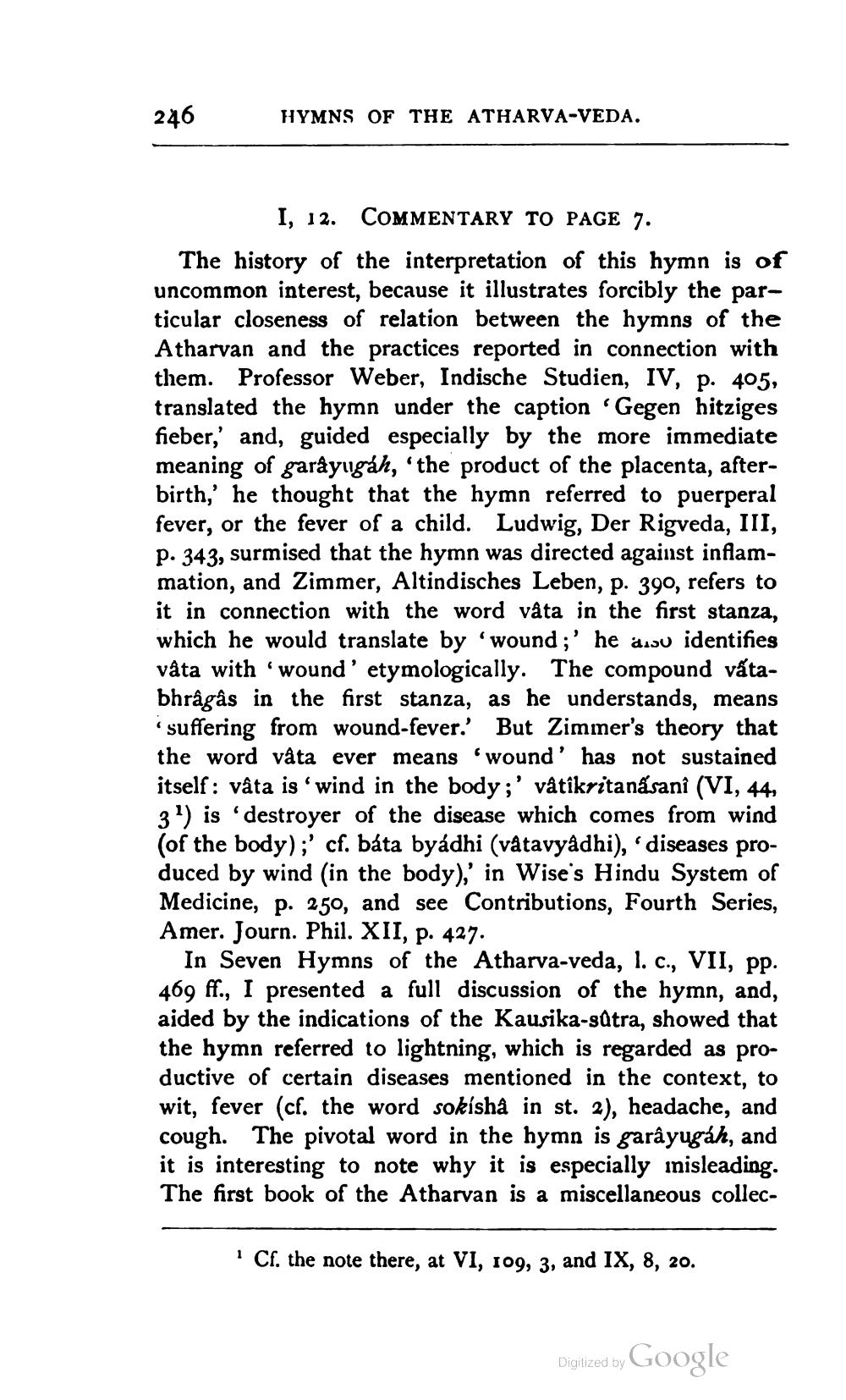________________
246
HYMNS OF THE ATHARVA-VEDA.
I, 12.
COMMENTARY TO PAGE 7.
The history of the interpretation of this hymn is of uncommon interest, because it illustrates forcibly the particular closeness of relation between the hymns of the Atharvan and the practices reported in connection with them. Professor Weber, Indische Studien, IV, p. 405, translated the hymn under the caption 'Gegen hitziges fieber,' and, guided especially by the more immediate meaning of garâyugáh, 'the product of the placenta, afterbirth,' he thought that the hymn referred to puerperal fever, or the fever of a child. Ludwig, Der Rigveda, III, p. 343, surmised that the hymn was directed against inflammation, and Zimmer, Altindisches Leben, p. 390, refers to it in connection with the word vâta in the first stanza, which he would translate by 'wound;' he also identifies vâta with 'wound' etymologically. The compound vấtabhrâgâs in the first stanza, as he understands, means 'suffering from wound-fever.' But Zimmer's theory that the word våta ever means 'wound' has not sustained itself: vâta is 'wind in the body;' vâtîkritanasanî (VI, 44, 3) is 'destroyer of the disease which comes from wind (of the body);' cf. báta byádhi (vâtavyâdhi), 'diseases produced by wind (in the body),' in Wise's Hindu System of Medicine, p. 250, and see Contributions, Fourth Series, Amer. Journ. Phil. XII, p. 427.
In Seven Hymns of the Atharva-veda, 1. c., VII, pp. 469 ff., I presented a full discussion of the hymn, and, aided by the indications of the Kausika-sûtra, showed that the hymn referred to lightning, which is regarded as productive of certain diseases mentioned in the context, to wit, fever (cf. the word sokishâ in st. 2), headache, and cough. The pivotal word in the hymn is garâyugáh, and it is interesting to note why it is especially misleading. The first book of the Atharvan is a miscellaneous collec
1 Cf. the note there, at VI, 109, 3, and IX, 8, 20.
Digitized by Google




